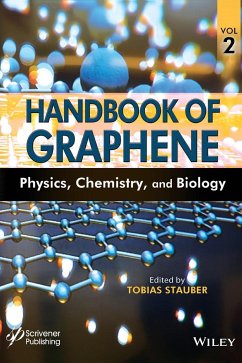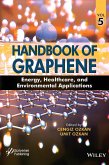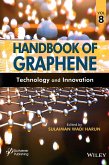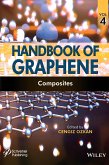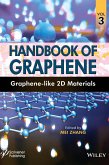This unique multidisciplinary 8-volume set focuses on the emerging issues concerning graphene materials and provides a shared platform for both researcher and industry. The Handbook of Graphene comprises a set of 8 individual volumes that brings an interdisciplinary perspective to accomplish a more detailed understanding of the interplay between the synthesis, structure, characterization, processing, applications and performance of the advanced graphene materials. The Handbook of Graphene comprises 140 chapters from world renowned experts. Volume 2 is solely focused on selected topics in physics, chemistry, and biology and provides an overview of the multitude of different research directions that are currently being taken at the international level. Some of the important topics include but not limited to: Topological design of graphene; graphene at the metal-oxide interface: a new approach to modify the chemistry of supported metals; the combinatorial structure of graphene; Interacting electrons in graphene; computational determination of the properties of graphene nanoribbons; synthetic electric fields influence the non-stationary processes in graphene; interaction and manipulation of bi adatoms on monolayer epitaxial graphene; strain engineering: electromechanical properties of graphene; characteristic mechanical responses of graphene membranes; graphene and its derivatives as platform for Maldi-MS; characterization and dynamic manipulation of graphene by in situ transmission electron microscopy at atomic scale; peculiarities of quasi-particle spectra in graphene nanostructures; complex refractive index (ri) of graphene; fractional quantum hall effect in graphene: a topological approach; graphene plasmonic: switching applications; theoretical study and numerical modeling of graphene's electromagnetic response; graphene-like a nb8-n compounds on metals and semiconductors; lower dimensional materials; nature of graphene, its chemical structure, composites, synthesis, properties and applications; graphene-based nanomaterials in tissue engineering and regenerative medicine. Audience This book is intended for researchers and graduate students in the field of advanced materials and graphene in particular, who are currently investigating the fundamental properties of this material and its applications in micro- and nanotechnologies.
Hinweis: Dieser Artikel kann nur an eine deutsche Lieferadresse ausgeliefert werden.
Hinweis: Dieser Artikel kann nur an eine deutsche Lieferadresse ausgeliefert werden.

